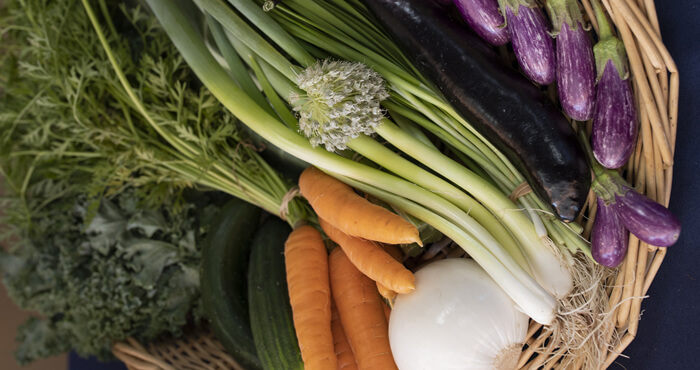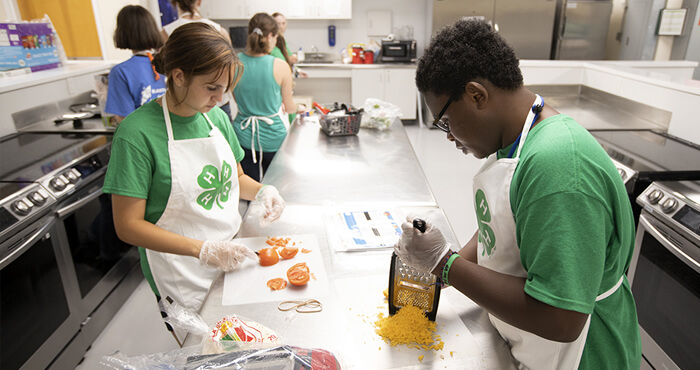
Eating Whole Grains
Whole grain foods now fill the grocery store aisles—you can find them in chips, bread, rice, oatmeal, and cereals. While they are known for being healthier than refined grains, some people may feel hesitant to try them.
Learn more about whole grains, including their benefits, so you can follow the USDA’s Choose MyPlate recommendation to make half of your grains whole grains.

What Are Whole Grains?
All grains begin as whole grains, which have three parts—the bran, the germ, and the endosperm. Unlike refined grains that are processed to only contain the endosperm, whole grains contain the three original parts and provide great sources of vitamins and fiber. Some refined grains are “enriched,” so some nutrients are added back to the grain—but not the fiber.
Many foods display “whole wheat” or “whole grain” proudly on their package, but you have to check the label for the Whole Grain Stamp—this ensures the food is 100% whole grains or provides a full serving of whole grains.
Benefits of Whole Grains
- Reduce the risk of chronic diseases, such as coronary heart disease, diabetes, and cancer.
- May aid with weight control and digestive health.
- Contain dietary fiber, which helps regulate digestion.
- May reduce cholesterol levels and obesity risks.
- Contain B vitamins, such as thiamin, riboflavin, and niacin, which play an important role in metabolism and ensure a healthy nervous system.
Adding Whole Grains to Your Diet
While eating whole grains may be something new, it can be easy to incorporate them into your diet. Review the following tips to add whole grains into your daily routine.
- Purchase whole-grain breads, muffins, oatmeal, or cereals to eat for breakfast.
- Rather than eating white rice, try brown rice—if you feel adventurous, then try quinoa, barley, or wild rice, too.
- When making spaghetti or other Italian dishes, replace your white pasta with whole grain pasta.
- Snack on whole wheat crackers, pita chips, or popcorn—you’ll be surprised at how many products are now made using whole grains.
- Tacos, quesadillas, and burritos can all be made with whole wheat or corn tortilla shells.
- Opt for making sandwiches with whole wheat bread instead of white bread.
- When baking, consider using whole grain flour rather than refined flour.
Whether you’re eating breakfast, lunch, dinner, or just a snack, there are tons of healthy and tasty whole wheat options for you to try.
For more information about whole grains, contact a Cooperative Extension Family and Consumer Sciences Educator at your local Extension office.
Adapted and excerpted from:
J. Holzinger, K. Shelnutt, and G. Kauwell, “MyPlate Foods to Increase: Whole Grains” (FCS80005), UF/IFAS Family, Youth and Community Sciences (revised 02/2013).
P. G. Harris and K. Shelnutt, “Gloriously Good Whole Grains” (FCS8990), UF/IFAS Food Family, Youth and Community Sciences (04/2011).
W. J. Dahl and L. Foster, “Shopping for Health: Whole Grains” (FSHN10-13), UF/IFAS Food Science and Human Nutrition (revised 07/2016).
“Why Is it Important to Eat Grains, Especially Whole Grains?" USDA Choose MyPlate (revised 11/2017).
FAMILY RESOURCES
- Disaster Prep and Recovery
- Disease Prevention and Management
- Families & Consumers
- Family Time
- Health and Nutrition
- Health and Nutrition for Children
- Health Care
- Pest Control
RESOURCES
UF/IFAS Sites
- Department of Family, Youth and Community Sciences
- Expanded Food & Nutrition Education Program (EFNEP)
- Family Nutrition Program (FNP)
- Food Science and Human Nutrition Department
- Health in a Heartbeat
UF/IFAS Publications
- Aging and Caregiving
- Children, Elders and Family
- Community Development
- Eating Well
- Food Safety in the Home
- Health and Nutrition
- Housing and Home Environment
- Money Matters
- Parenting
- Relationships
State & Federal Agencies



.jpg)

.jpg)